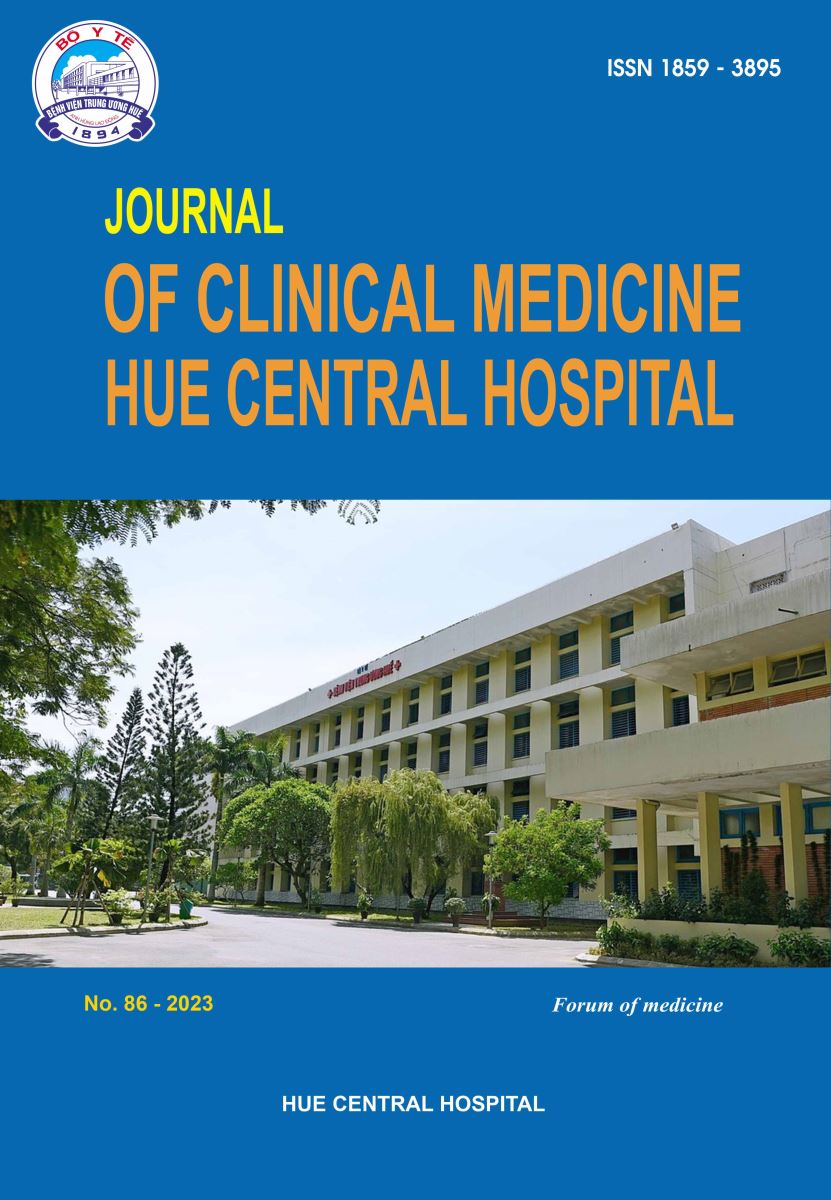Abstract
Objectives: To investigate arrhythmias in patients with primary chronic mitral regurgitation by using a 24 - hour ECG Holter and to evaluate the association between arrhythmias and the degree of mitral valve regurgitation, left atrial diameter, degree of NYHA, left ventricular ejection fraction (LVEF%).
Methods: A cross - sectional descriptive study of 48 patients diagnosed with chronic mitral regurgitation with valvular involvement lesions such as rheumatism or prolapse valve at the Department of Internal Cardiology of Hue Central Hospital from 4/2021 - 4/2022.
Results: The mean age of sample was 58.19 ± 16.46 years, women accounted for 64.58%. Among patients who had arrhythmias with 24 - hour Holter ECG monitoring, the majority were atrial fibrillation (58.30%), followed by premature ventricular complex (54.20%) and premature supraventricular complex (16.70%). The incidence of atrial fibrillation increased when the degree of mitral regurgitation was heavier, and the group had a left atrial diameter of > 45 mm (p < 0.05). The incidence of atrial fibrillation varies between levels of heart failure according to the NYHA (p < 0.05). Meanwhile, there was no difference in the incidence of atrial fibrillation between the two groups, EF < 50% and EF ≥ 50%. When analyzing multivariate logistic regression, age (OR = 1.062, 95% CI: 1.005 - 1.121) and left atrial diameter (OR = 1.181, 95% CI: 1.033 - 1.349) are prognostic factors for atrial fibrillation in patients with chronic mitral regurgitation.
Conclusions: Cardiac arrhythmias are a common complication in patients with chronic mitral regurgitation. Atrial fibrillation remains the most common arrhythmia. Age factors and left atrial diameter are 2 factors that increase the likelihood of atrial fibrillation in these patients.
References
Hanson I, Afonso LC. Mitral Regurgitation. Medscape. 2018.
Behra SS, KuMarr AA, Singh H, Satyanand K. To study the prevalence of Arrhythmias in Valvular Heart Disease and their Correlation with Echocardiographic Variables. Journal of Clinical and Diagnostic Research. 2018;12(11):33-34.
Viện Tim mạch Việt Nam. Nghiên cứu đặc điểm rối loạn nhịp thất bằng holter điện tim 24 giờ ở bệnh nhân bệnh van hai lá do thấp, ed. Viện. 2017: Viện Tim mạch Việt Nam.
McDonagh TA, Metra M, Adamo M, Gardner RS. 2021 ESC Guidelines for the diagnosis and treatment of acute and chronic heart failure. Eur Heart J. 2021;42(36):3599-3726.
Đoàn Chí Thắng. Nghiên cứu rối loạn nhịp tim bằng các phương pháp thăm dò điện tim không xâm nhập ở bệnh nhân sau phẫu thuật sửa chữa hoàn toàn tứ chứng Fallot. Trường Đại Học Y Dược Huế: Trường Đại Học Y Dược Huế. 2014.
Nguyễn Anh Vũ. Siêu âm tim: cập nhật chẩn đoán. Nhà xuất bản Đại học Huế. 2018.
Duran NE, Duran I, Sönmez K, Gençbay M. Frequency and predictors of atrial fibrillation in severe mitral regurgitation. Anadolu Kardiyol Derg. 2003;3(2):129-34.
Grigioni F, Avierinos JF, Ling LH, Scott CG. Atrial fibrillation complicating the course of degenerative mitral regurgitation: determinants and long-term outcome. J Am Coll Cardiol. 2002;40(1):84-92.
Nguyễn Duy Toàn, Nguyễn Oanh Oanh. Nghiên cứu tỷ lệ, đặc điểm lâm sàng, cận lâm sàng bệnh nhân suy tim cấp tính có rung nhĩ. Tạp chí Y Dược học Quân sự. 2015;4(1):96-102.
Krishnamoorthy KM, Dash PK, Sandri U. Atrial fibrillation in patients with isolated severe rheumatic mitral regurgitation. J Assoc Physicians India. 2001;49(1):514-7.
| Published | 20-05-2023 | |
| Fulltext |
|
|
| Language |
|
|
| Issue | No. 86 (2023) | |
| Section | Original article | |
| DOI | 10.38103/jcmhch.86.12 | |
| Keywords | Arrhythmias, chronic mitral regurgitation. |

This work is licensed under a Creative Commons Attribution-NonCommercial-NoDerivatives 4.0 International License.
Copyright (c) 2023 Journal of Clinical Medicine Hue Central Hospital

